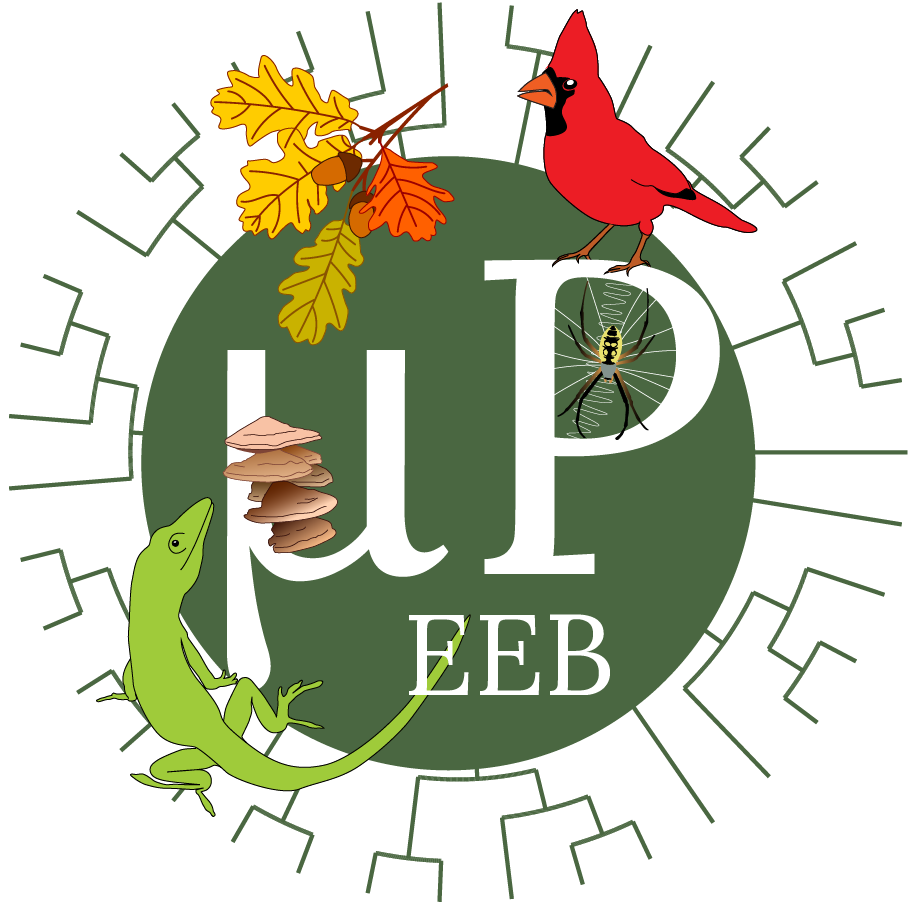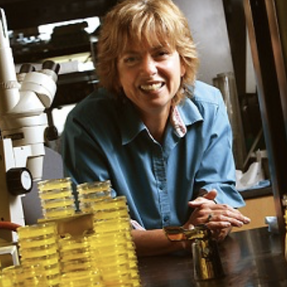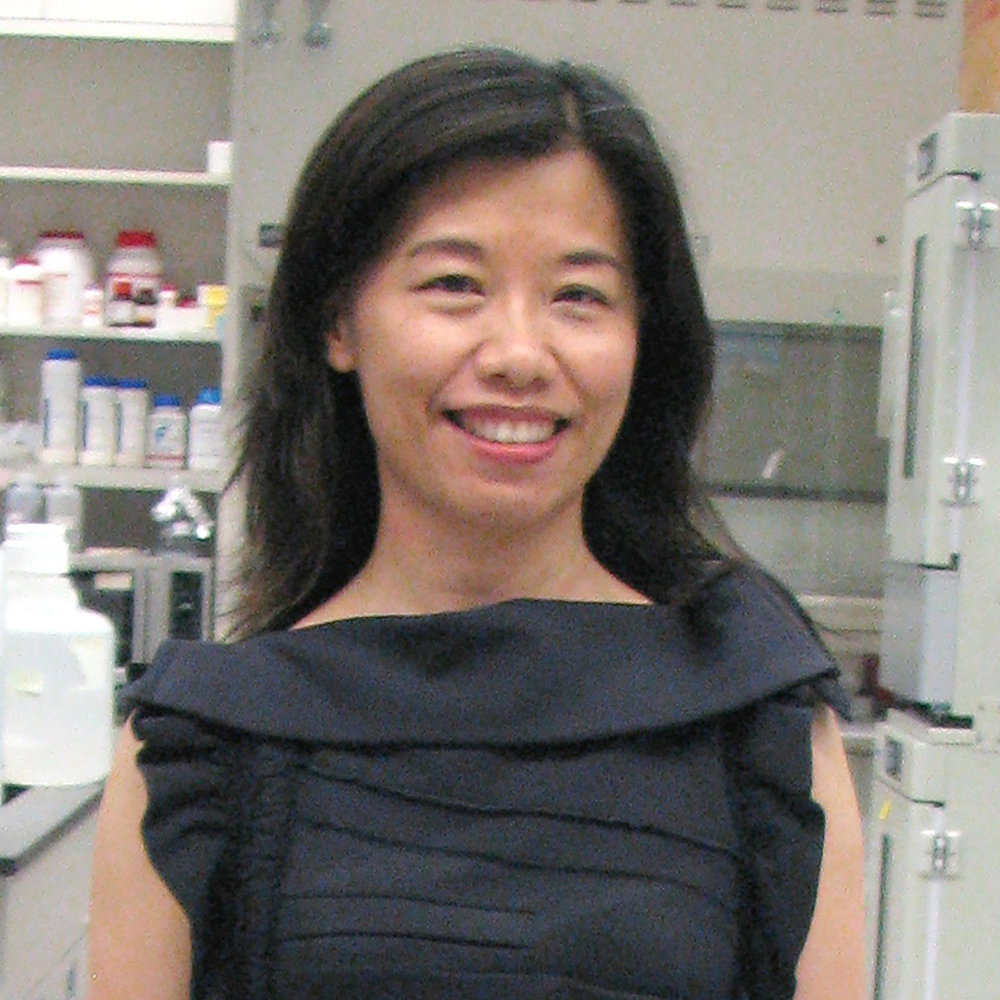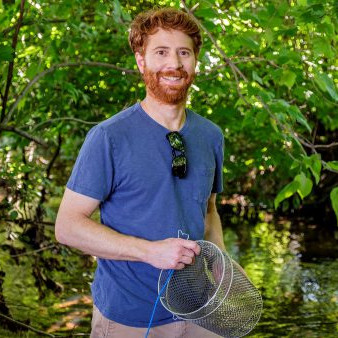µP
microPublication Biology
get your data out, be cited
Starting January 1, 2025, the article processing charge (APC) for submissions received on or after this date will increase from $250 to $350.

Now publishing Ecology and Evolution papers
Recent microPublications
 PUBLISHED: 4/22/2025
PUBLISHED: 4/22/2025- new finding
Popy Devnath, Susan M. Noh, Shelby M. Jarvis, Kayla Earls and Kennan J. Oyen
 PUBLISHED: 4/22/2025
PUBLISHED: 4/22/2025- new finding
Kazi Hasan and Hany Dweck
 PUBLISHED: 4/21/2025
PUBLISHED: 4/21/2025- new finding
- materials and reagents
Carlos A. Cevallos, Anna Leigh White, Brooke A. Fazio, Lillian S. Wendt, Jasmine W. Feng, Dora Posfai, et al., Omar Alberto Quintero-Carmona
 PUBLISHED: 4/21/2025
PUBLISHED: 4/21/2025- new finding
Jameelah Destry, Kelso Cochran and Aide Macias-Muñoz







- PUBLISHED: 4/22/2025
- new finding
Popy Devnath, Susan M. Noh, Shelby M. Jarvis, Kayla Earls and Kennan J. Oyen
- PUBLISHED: 4/22/2025
- new finding
Kazi Hasan and Hany Dweck
- PUBLISHED: 4/21/2025
- new finding
- materials and reagents
Carlos A. Cevallos, Anna Leigh White, Brooke A. Fazio, Lillian S. Wendt, Jasmine W. Feng, Dora Posfai, et al., Omar Alberto Quintero-Carmona
- PUBLISHED: 4/21/2025
- new finding
Jameelah Destry, Kelso Cochran and Aide Macias-Muñoz
Most Cited microPublications
 PUBLISHED: 4/18/2023# Citations: 98
PUBLISHED: 4/18/2023# Citations: 98- methodology
Sergi Sayols
 PUBLISHED: 3/27/2018# Citations: 76
PUBLISHED: 3/27/2018# Citations: 76- methodology
David Angeles-Albores, Raymond Y.N. Lee, Juancarlos Chan and Paul W. Sternberg
 PUBLISHED: 5/1/2018# Citations: 27
PUBLISHED: 5/1/2018# Citations: 27- new method
Daniel J. Dickinson, Mark M. Slabodnick, Alicia H. Chen and Bob Goldstein
 PUBLISHED: 1/7/2020# Citations: 19
PUBLISHED: 1/7/2020# Citations: 19- new finding
Ulkar Aghayeva, Abhishek Bhattacharya and Oliver Hobert
 PUBLISHED: 9/3/2020# Citations: 14
PUBLISHED: 9/3/2020# Citations: 14- new method
Sonia El Mouridi, Yuli Peng and Christian Frøkjær-Jensen
 PUBLISHED: 4/15/2019# Citations: 14
PUBLISHED: 4/15/2019# Citations: 14- new finding
Bhoomi J Madhu, Aileen E Salazar and Tina L Gumienny
- PUBLISHED: 4/18/2023
- methodology
Sergi Sayols
- PUBLISHED: 3/27/2018
- methodology
David Angeles-Albores, Raymond Y.N. Lee, Juancarlos Chan and Paul W. Sternberg
- PUBLISHED: 5/1/2018
- new method
Daniel J. Dickinson, Mark M. Slabodnick, Alicia H. Chen and Bob Goldstein
- PUBLISHED: 1/7/2020
- new finding
Ulkar Aghayeva, Abhishek Bhattacharya and Oliver Hobert
- PUBLISHED: 9/3/2020
- new method
Sonia El Mouridi, Yuli Peng and Christian Frøkjær-Jensen
- PUBLISHED: 4/15/2019
- new finding
Bhoomi J Madhu, Aileen E Salazar and Tina L Gumienny
About microPublication
microPublication.org publishes brief articles on research findings presented in a single figure to rapidly disseminate experimentally sound results to the community. These can be novel findings, negative results, replication successful (including being scooped), replication unsuccessful; perceived impact is not relevant. Each article is peer-reviewed, assigned a DOI, and your data is curated and deposited in third-party authoritative scientific databases upon publication. Over 1,000 microPublication Biology articles are now discoverable through PMC, PubMed, EuropePMC, Google Scholar, and university library catalogs.
microPublication Biology is an open access journal that publishes research in all areas of life sciences. microPublication.org publishes single, validated findings that may be novel, reproduced, negative, lack a broader scientific narrative, or perceived to lack high impact. All published articles are peer-reviewed for scientific rigor and reproducibility. All published article are vetted for adherence to community standards in nomenclature and data reporting.
microPublication aims to advance scholarly communication by short-circuiting the publication-to-database process, placing new findings directly into information discovery spaces upon publication. This is in addition to our articles being findable through general indexers such as PubMed, PubMedCentral and Google Scholar. In addition to being open access, we make data from our articles easier to access, by collaborating collaborations with community-directed authoritative databases e.g., WormBase, FlyBase, PomBase, ZFIN, etc.
microPublication relies on curators of these databases to define copyediting guidelines that meet community nomenclature standards and reporting, cutting down on typos and alerting the databases to newly identified bioentities. The microPublication submission workflow includes database curators, allowing expert annotation and further data vetting after article acceptance. Upon publication, article metadata and curated data are exported to and integrated into these databases. As such, Seamlessly and behind the scenes, microPublication turns the scientific publishing process into a curatorial one.
microPublication journals only accept high-quality data and work. Reported results are original work that has not been published elsewhere. Each submission includes a complete description of the result with accompanying reagents, resources, tools, and methodologies that were used in the experiment and any analysis. Appropriate controls and replicates are expected for all results. We publish only those articles that have been through our peer-review system. See author guidelines for specific information about acceptable data. See our guidelines on peer-review for more information.
As part of microPublication Biology's commitment to protecting the integrity of the scholarly record, we employ iThenticate to detect plagiarism. iThenticate Similarity Reports provide an overall similarity index for each submission and inform editors on text copied from other sources without attribution. Plagiarized content will not be considered for publication. If plagiarism is identified, we will follow COPE guidelines.
Authors must follow guidelines recommended by the International Committee of Medical Journal Editors in the Uniform Requirements for Manuscripts Submitted to Biomedical Journals at http://www.icmje.org: “When reporting experiments on human subjects, authors should indicate whether the procedures followed were in accordance with the ethical standards of the responsible committee on human experimentation (institutional and national) and with the Helsinki Declaration of 1975, as revised in 2008. If doubt exists whether the research was conducted in accordance with the Helsinki Declaration, the authors must explain the rationale for their approach and demonstrate that the institutional review body explicitly approved the doubtful aspects of the study. When reporting experiments on animals, authors should indicate whether the institutional and national guide for the care and use of laboratory animals was followed.”
Authors must follow guidelines recommended by the International Committee of Medical Journal Editors in the Uniform Requirements for Manuscripts Submitted to Biomedical Journals at http://www.icmje.org: “Patients have a right to privacy that should not be violated without informed consent. Identifying information, including names, initials, or hospital numbers, should not be published in written descriptions, photographs, or pedigrees unless the information is essential for scientific purposes and the patient (or parent or guardian) gives written informed consent for publication. Informed consent for this purpose requires that an identifiable patient be shown the manuscript to be published. Authors should disclose to these patients whether any potential identifiable material might be available via the Internet as well as in print after publication. Patient consent should be written and archived with the journal, the authors, or both, as dictated by local regulations or laws." “Nonessential identifying details should be omitted. Informed consent should be obtained if there is any doubt that anonymity can be maintained…If identifying characteristics are altered to protect anonymity, such as in genetic pedigrees, authors should provide assurance, and editors should so note, that such alterations do not distort scientific meaning.”
See our Privacy Notice and the General Data Protection Regulation Notice.
microPublication does not accept submissions of work that have been published in peer-reviewed journals or repositories. We do not consider publication as an academic thesis, electronic preprint, or abstract as a prior publication.
microPublication is an open-access journal available to anyone with online access. microPublication Biology in particular, publishes research relevant to all members of the science community interested in the biological sciences.
microPublication is currently supported by funding from the National Library of Medicine. As part of our long-term sustainability plan, starting April 2nd, 2022 we will charge $250 per article, upon publication acceptance, to cover costs but not new initiatives. No article will be refused because of an author's inability to pay page charges.
microPublication Biology accelerates scientific discovery by making technically sound research results freely open to the public through peer-reviewed publications and integration with other biomedical information via authoritative databases. Our articles provide researchers with credit for their findings through microPublication citations discoverable on PubMed.
- Exciting new research findings or reagents you want to rapidly place in the public domain; submitted microPublications can often be reviewed and published in microPublication Biology within a week.
- Experimental findings that did not fit into the narrative of an existing publication, and instead have remained in your lab notebook/file drawer/computer, ultimately unknown to the scientific community.
- New experimental findings that you do not anticipate fitting into future publications. Note: if your plans change, these findings can be included as a citable peer-reviewed publication that supports your work.
- An experimental finding that is viewed as a “negative result”, but is important for the field. For example, a null mutation in an organism that does not result in an obvious mutant phenotype (a wild-type null phenotype). Publication of these “negative results” provides potentially hypothesis-generating genetic information as well as can save other researchers from spending time and money repeating the same analysis.
- Experimental findings that provide valuable supporting information for a field – successful replication of recently published work, or just as important, cautionary information – unsuccessful replication of published work.
- Experimental findings included in an existing publication as an “unpublished observation” or ‘data not shown’ and thus not visible to the scientific community and not officially published.
- Experimental findings derived from small projects, for example undergraduate summer research projects, graduate rotation projects, that stand alone and are not necessarily part of a larger effort.
- You can include microPublication Biology articles in yourCurriculum Vitae. Note: To avoid confusion with other publications, we recommend that your microPublication articles are included in a separate section with the heading “microPublications”
microPublication submissions are open to all levels of researchers. Whether you are a Principal Investigator (PI), postdoctoral researcher, a current or recent graduate student, undergraduate, or work in industry, micropublishing provides a route for you to receive credit for your findings and to get those data that do not fit into full-length articles into the public domain. Please note that manuscripts need to be approved for submission by the funding-supported PI or group head. PI approval can be entered through the online data submission form on the microPublication Biology site.
microPublication Biology Editorial Board
 Diana Chu
Diana ChuSan Francisco State University, CA USA
 Barbara Conradt
Barbara ConradtLudwig Maximilian University of Munich, Germany
 Monica Driscoll
Monica DriscollRutgers University, NJ USA
 Marie Anne Felix
Marie Anne FelixInstitut de Biologie de l’Ecole Normale Supérieure, France
 Craig Mello
Craig MelloUniversity of Massachusetts Medical School Worcester, MA USA
 Hitoshi Sawa
Hitoshi SawaNational Institute of Genetics, Japan
 Jordan Ward
Jordan WardUniversity of California Santa Cruz, CA USA
 Brian Oliver
Brian OliverNational Institute of Diabetes and Digestive and Kidney Diseases Bethesda, MD USA
Alumni
 Andy Golden
Andy GoldenNational Institute of Diabetes and Digestive and Kidney Diseases Bethesda, MD USA
 Patricia Kuwabara
Patricia KuwabaraUniversity of Bristol, UK
Core Editorial Team
 Paul Sternberg
Paul SternbergEditor-In-Chief
California Institute of Technology, Pasadena, CA USA
 Tim Schedl
Tim SchedlScience Officer C elegans
Washington University School of Medicine, St Louis, MO USA
 Daniela Raciti
Daniela RacitiExecutive Editor
California Institute of Technology, Pasadena, CA USA
 Karen Yook
Karen YookExecutive Editor
California Institute of Technology, Pasadena, CA USA
 Nicholas Stiffler
Nicholas StifflerSenior Developer
California Institute of Technology, Pasadena, CA USA
 Cecilia Nakamura
Cecilia NakamuraBilling
California Institute of Technology, Pasadena, CA USA
 Claire Wright-Coleman
Claire Wright-ColemanAdministrative Assistant
California Institute of Technology, Pasadena, CA USA
Editorial Staff
 Thom Kaufman
Thom KaufmanScience Officer D. melanogaster
Indiana University, Bloomington, IN USA
 Brian Oliver
Brian OliverScience Officer D. melanogaster
National Institute of Diabetes and Digestive and Kidney Diseases Bethesda, MD USA
 Kami Ahmad
Kami AhmadScience Officer D. melanogaster
Fred Hutchinson Cancer Research Center, Seattle, WA USA
 Steven Marygold
Steven MarygoldManaging Editor D. melanogaster
University of Cambridge, Cambridge, UK
 Stephanie Mauthner
Stephanie MauthnerManaging Editor D. melanogaster
Indiana University Bloomington, IN USA
 Cale Whitworth
Cale WhitworthManaging Editor D. melanogaster
Indiana University Bloomington, IN USA
 Jing Yang
Jing YangScience Officer Xenopus
University of Illinois at Urbana-Champaign, Urbana, IL USA
 Christina James-Zorn
Christina James-ZornManaging Editor Xenopus
Cincinnati Childrens, Cincinnati, OH USA
 Jaehyoung Cho
Jaehyoung ChoManaging Editor C. elegans
California Institute of Technology, Pasadena, CA USA
 Gary Schindelman
Gary SchindelmanManaging Editor C. elegans
California Institute of Technology, Pasadena, CA USA
 Cathy Savage-Dunn
Cathy Savage-DunnScience Officer C. elegans
Queens College at the City University of New York, Flushing, NY, USA
 Yishi Jin
Yishi JinScience Officer C. elegans
University of California, San Diego, CA USA
 Cheryl Van Buskirk
Cheryl Van BuskirkScience Officer C. elegans
California State University, Northridge, CA, USA
 Lina Dahlberg
Lina DahlbergScience Officer C. elegans, undergraduate research experience
Western Washington University, Bellingham, WA, USA
 Matt Marcello
Matt MarcelloScience Officer C. elegans, undergraduate research experience
PACE University, New York, NY, USA
 Christian Froekjaer Jensen
Christian Froekjaer JensenScience Officer C. elegans
KAUST, Saudi Arabia
 Alon Zaslaver
Alon ZaslaverScience Officer C. elegans
Hebrew University of Jerusalem, Jerusalem, Israel
 Yen-Ping Hsueh
Yen-Ping HsuehScience Officer C. elegans
Academia Sinica, Taipei, Taiwan
 Chiou-Fen Chuang
Chiou-Fen ChuangScience Officer C. elegans, Fungi
University of Illinois at Chicago, Chicago, Illinois, USA
 Bhagwati Gupta
Bhagwati GuptaScience Officer C. elegans
McMaster University Hamilton, Ontario, Canada
 David Reiner
David ReinerScience Officer C. elegans
Texas A&M Health Science Center, Houston, TX, USA
 Joshua Bembenek
Joshua BembenekScience Officer C. elegans
Wayne State University, Detroit, MI USA
 Leonore Reiser
Leonore ReiserManaging Editor Arabidopsis
Phoenix Bioinformatics, Fremont, CA USA
 Iain Searle
Iain SearleScience Officer Arabidopsis
The University of Adelaide, Adelaide Australia
 Nick Kaplinsky
Nick KaplinskyScience Officer Arabidopsis
Swarthmore College, Swarthmore, PA USA
 Charles Hoffman
Charles HoffmanScience Officer S. pombe
Boston College, Chestnut Hill, MA USA
 Sarah Lambert
Sarah LambertScience Officer S. pombe
Curie Institute, Paris, France
 Sarah Sabatinos
Sarah SabatinosScience Officer S. pombe
Ryerson University, Toronto, Ontario, Canada
 Monte Westerfield
Monte WesterfieldScience Officer Zebrafish
University of Oregon, Eugene, OR USA
 Petra Fey
Petra FeyManaging Editor Dictyostelium
Northwestern University, Chicago, IL USA
 Rex Chisholm
Rex ChisholmScience Officer Dictyostelium
Northwestern University, Chicago, IL USA
 Lukas Mueller
Lukas MuellerScience Officer Solanaceae
Cornell University, Ithaca, NY, USA
 Ann Kirchmaier
Ann KirchmaierScience Officer S. cerevisiae
Purdue University, West Lafayette, IN, USA
 Stacia Engel
Stacia EngelManaging Editor S. cerevisiae
Stanford University, Palo Alto, CA USA
 Michael Law
Michael LawScience Officer S. cerevisiae
Stockton University, Galloway, NJ, USA
 Carson Andorf
Carson AndorfScience Officer Maize
MaizeGDB, USDA-ARS
 Joel Sussman
Joel SussmanScience Officer Structural Biology
Weizmann Institute of Science, Rehovot, Israel
 Jaime Prilusky
Jaime PriluskyProteopedia Editor Structural Biology
Weizmann Institute of Science, Rehovot, Israel
 Jacqueline Campbell
Jacqueline CampbellScience Officer Soybean
SoyBase, USDA-ARS
 Evelina Basenko
Evelina BasenkoScience Officer Fungi
University of Liverpool, Liverpool, England, United Kingdom
 Ksenija Gasic
Ksenija GasicScience Officer Rosaceae
Clemson University, Clemson, SC, USA
 Susana Wadgymar
Susana WadgymarScience Officer Ecology and Evolution
Davidson College, Davidson, NC USA
 Stacy Farina
Stacy FarinaScience Officer Ecology and Evolution
Howard University, Washington, DC USA
 Robert J Williamson
Robert J WilliamsonScience Officer Ecology and Evolution
Rose-Hulman Institute of Technology, Terre Haute, IN USA
 Margaret Metz
Margaret MetzScience Officer Ecology and Evolution
Lewis & Clark College, Portland, OR USA
 Santiago Salinas
Santiago SalinasScience Officer Ecology and Evolution
Kalamazoo College, Kalamazoo, MI USA
 Douglas Chalker
Douglas ChalkerScience Officer Ciliates
Washington University, St Louis, MO USA
 Paul Craig
Paul CraigScience Officer Computational Biology, Protein structure prediction
Rochester Institute of Technology, Rochester, NY, USA
 Tsui-Fen Chou
Tsui-Fen ChouScience Officer Biochemistry
California Institute of Technology, Pasadena, CA USA
 Jared Leadbetter
Jared LeadbetterScience Officer Microbiology
California Institute of Technology, Pasadena, CA USA
Curators
 Chris Grove
Chris GroveCurator WormBase
California Institute of Technology, Pasadena, CA USA
 Stavros Diamantakis
Stavros DiamantakisCurator WormBase
EMBL-EBI, Hinxton, Cambridge, England, United Kingdom
 Raymond Lee
Raymond LeeCurator WormBase
California Institute of Technology, Pasadena, CA USA
 Ranjana Kishore
Ranjana KishoreCurator WormBase
California Institute of Technology, Pasadena, CA USA
 Rex Nelson
Rex NelsonCurator Soybase
USDA-ARS
 Naomi Stover
Naomi StoverCurator Tetrahymena Genome Database
Bradley University, Peoria, IL USA
 Valerie Wood
Valerie WoodCurator PomBase
University of Cambridge, Cambridge, UK
 Pascal Carme
Pascal CarmeCurator PomBase
University College London, London, UK
- Constance Smith
Curator Mouse Genome Informatics
The Jackson Laboratory, Bar Harbor, ME USA
 Jing Yu
Jing YuCurator CottonGen
Washington State University, WA USA
- Shur-Jen Wang
Curator Rat Genome Database
Medical College of Wisconsin Milwaukee, WI USA
 Holly Paddock
Holly PaddockCurator ZFIN
University of Oregon, Eugene, OR, USA
Alumni
 Sarah Torres
Sarah TorresPublishing Editor
California Institute of Technology, Pasadena, CA USA
 Andy Golden
Andy GoldenScience Officer C. elegans
The National Institute of Diabetes and Digestive and Kidney Diseases, Bethesda, MD USA
 Lisa Harper
Lisa HarperManaging Editor Maize
MaizeGDB, USDA-ARS
- Todd Harris
Technology and Operations Manager
Ontario Institute for Cancer Research, Toronto Canada
For Authors
microPublication Biology publishes these Article types:
Acceptance of a manuscript is independent of the perceived impact.
Submissions to microPublication Biology must have the equivalent scientific rigor and clear, scholarly written text as that of articles in other well-respected, peer-reviewed journals (Current Biology, Development, Evolution, Genetics, MBoC, Molecular Ecology, PLoS Biology, and others) but within the context of our publishing model - a single figure and short format text.
Submissions that do not meet this standard will be returned to the authors without peer review or rejected following review.
During the submission process, authors will be asked to indicate one or more of the seven Article types above. The submission text must be consistent with the Article type.
Articles with undergraduate authors must meet the same peer review standards as any other article in microPublication Biology. The faculty mentor has an essential role in the process, including design and execution of the study, adherence to scientific rigor, appropriate statistical analysis (if relevant), presentation of the data, and clear scholarly written text. The faculty mentor must either be the senior author on the manuscript or provide a written letter attesting that the manuscript meets the standard described here.
microPublication Biology follows the authorship guidelines of the International Committee of Medical Journal Editors (ICMJE). All authors share responsibility for the content of the microPublication. Authorship should be limited to those persons that performed the experiment, any analysis, and or write-up. Submitting authors are required to assign authorship contributions using the Contributor Roles Taxonomy (CRediT) to provide transparency to the contributions of researchers to scholarly published work, to enable discoverability and to improve attribution, credit, and accountability.
Individuals who do not satisfy authorship guidelines but participated materially in the work, should be included in the acknowledgement section.
The Principal Investigator (PI) of the laboratory in which the work was performed may or may not be included at the discretion of the PI; however this PI must approve the submission of the article and provide the details of any funding source.
Authors are required to accept the following conditions when submitting an article: “I/we declare to the best of my/our knowledge that the experiment is reproducible; that the submission has been approved by all authors; that the submission has been approved by the laboratory’s Principal Investigator, and that the results have not been published elsewhere.* The author(s) declare no conflict of interest.”
*Note: We do not consider publication as an academic thesis, electronic preprint, or abstract as a prior publication.
Reported results must be original work that has not been published elsewhere. Experiments and or analyses must be well-described and appropriately interpreted. Each submission must include a complete description of the result with accompanying reagents, resources, tools, and methodologies that were used in the experiment and any analysis. Results need to be validated using appropriate controls and replicates, which themselves need to be reported in the article. All biological entities must adhere to standards and nomenclature set and maintained by the relevant community knowledgebase, as determined bymicroPublication Biology. All articles and accompanying data will be peer-reviewed.
See our guidelines on peer-review for more information.
To submit an article, go to https://portal.micropublication.org
First time users should click on ‘Sign up’ and provide a username, personal information and a password. Please store this information as all further communication, portal activity, including invitations to review and account resetting will require these details.
Before proceeding, look in your email inbox for a verification message from our system, if you do not receive one within a few minutes, there could be something wrong with your entered email address or your institution could be blocking emails from our mail server.
Please let us know if you need help to set up or log into your account: contact@micropublication.org.
Name - Please add names in the order of authorship. You are required to appoint both a Submitting Author, who will be the main contact during the submission process and a Corresponding Author who will be the main contact for the article after publication. The Submitting and Corresponding Authors can be the same person.
Affiliation - Please include the institute name, city, state/region and country for all authors. Do not include street addresses or mail-codes.
ORCID - include ORCID iDs for all authors.
CRediT - Contributor Roles Taxonomy. You are required to describe each authors’ contribution to the work that is being submitted, using the CRediT taxonomy. See the NISO website for more information.
For long author's lists, authors can fill out a spreadsheet. You can contact editors@micropublication.org for more information.
Articles in microPublication Biology are categorized by Species and Data Type (e.g., Expression Data, Phenotype Data, New Methods, Software, etc.). In addition, articles are labeled by the Nature of the Findings (New Finding, Negative Result, Replication -Successful, etc). These categories and labels will be used to
- inform editorial staff of the type of data being reported guide
- assignment of the article to the appropriate curators at
- collaborating databases ease searching and indexing on our journal site
These categories and labels will continue to expand as needed.
- Species
Choose a species from the dropdown, if your species is not listed there, please select ‘Other’.
- Data Type
One of the goals of microPublication is to integrate research findings into Knowledgebases for bioinformatic indexing and curation. To facilitate such integration, when possible, we guide authors by providing data type specific curation forms. If the form for a specific data type is not available, we will alert a Curator at the relevant knowledgebase. Data types currently covered are:
Biochemistry: Biochemistry data refer to any type of in-vitro data that is generated through the study of chemical processes.Cell Culture: Cell culture studies investigate cell behavior, responses to stimuli, cell growth, cell interactions, and various cellular processes in cells grown under controlled conditions, generally outside of their natural environment.Class Activities:Computational Biology: Computational Biology encompasses the use of computational techniques to analyze and model biological data, including biological modelingDatabase Updates: Database updates describe a new knowledge or database, novel features or tools in an existing database, or updates to a database such as any new coverage of data.Ecology and Evolution: Ecology and evolution micropublications describe patterns of abundance, interaction, distribution, diversity, and function across biological levels of organization, from genes to biomesElectrophysiology Data: Electrophysiology data refer to data generated by measuring the electrical activity of living cells, tissues, or organs.Expression Data: Expression data report spatial or temporal expressions of a gene under normal conditions, studied on a gene by gene basis.Gene Model: The article focuses on the characterization of a gene modelGenetic Screens: Genetic screens report the outcome of studies focused on identifying and selecting animals with a phenotype of interest among a mutagenized population.Genome: Genome data report whole genome sequence(s).Genome Announcements:Genomic: Genomic data report structural or functional analyses of sequence-based data.Genotype Data: Genotype data report sequence information for a specific allele, locus, strain, or line.Integrations: Integrations are extended narratives for data published as microPublications. These articles can include a final experiment that ties published microPublication data into a cohesive report.Interaction Data: Interaction data analyze how genes, gene products, or chemicals may influence the function of other genes, or on physical interactions between genes and gene products (protein-protein, DNA protein, RNA protein).Methods: Methods articles describe new experimental or analysis techniques used for research.Models of Human Disease: Models of human disease articles describe an experimental model for a specific human disease (e.g., Parkinson’s disease), for example, through the study of a gene/allele or strain that recapitulates disease phenotype(s).Nomenclature data:Phenotype Data: Phenotype data describe organisms containing genetic or genomic alterations from control organisms.Phylogenetic Data: Phylogenetic data describe evidence for the evolutionary standing of a species or group of species with respect to lines of descent.Science and Society: Science and society articles describe topics that are of interest to the wider science community and do not focus on specific types of data that are curated in science knowledgebases.Software: Software articles report computer programs or algorithms developed for the analysis or generation of data.Structural Biology Data: Structural biology data include three-dimensional structures of biological molecules, such as proteins, nucleic acids, and carbohydrates.Undergraduate Research Experience: - Nature of microPublication Findings. These speak to the kind of result you are reporting and are as follows:
New finding -a first-time published discovery or result, including first-time published new reagents
Finding not previously shown -an unpublished result mentioned in a prior publication, but never included, these include data not shown.
Example article: Michael, 2017Negative result -a result from a solid experiment that did not produce a result you expected and so does not support your hypothesis. Such results are often useful, but left out of scholarly communication.
Replication – successful -a report that supports a previous outcome of a similar experiment.
Replication – unsuccessful -a report that does not support a previous outcome of a similar experiment.
Commodity validation -results reported for a commercial reagent that replicate results achieved using commonly available reagents and so do not require the purchase of the commercial product.
microPublications are meant to be reports of single experiments. We expect these data to fit within one figure. Multiple panels are allowed.
We accept images in .jpg and .png formats with a minimum 500 DPI. The image should have approximately a 4:3 aspect ratio.
Within your image please ensure:
- It has not been published before (exceptions will be made for Integration Articles)
- Solid lines are not broken up
- Image areas are not pixelated
- Text is legible and of high quality
The text in the figure needs to be well readable at 100% magnification of the PDF view. Your article cannot be published if your figure does not meet these requirements.
To avoid inappropriate image manipulation, see Rossner and Yamada 2004, Journal of Cell Biology, 166:11.
Sufficient information must be provided to allow another group to repeat the experimental analysis.
Include all pertinent reagents used and generated in your study. Biological reagents such as strains, animals, antibodies, and molecular tools (e.g. transgenes, plasmids) should be listed in a table. For each reagent include enough information for unambiguous identification, see examples below.
For strains and plasmids, minimally provide the name, full genotype, and source where it is available. Provide the full genotypes for any transgene or engineered allele within the strain genotype or in a separate column. You are welcome to include any other relevant information in subsequent columns as you wish.
| Strain | Genotype | Available from |
|---|---|---|
| N2 | Caenorhabditis elegans | CGC |
| PHX2811 | ceh-84(syb2811[crh-84::GFP]) | Sunybiotech |
| EG4788 | Caenorhabditis portoensis | CGC |
| OH12747 | Caenorhabditis portoensis | CGC |
| Plasmid | Genotype | Description |
|---|---|---|
| pAB1 | inx-6p(2TAAT-deletion)::tagRFP::unc-54 3’ UTR; | 1654 bp region upstream of inx-6 coding region, where two TAAT sites were deleted. Available at Addgene. |
| Antibody | Animal and clonality | Description |
|---|---|---|
| anti-FLD-1 | Rabbit polyclonal | Rabbit antiserum was generated by immunizing a rabbit against the peptide TQVGDVESGPLRTQ corresponding to C terminal amino acids. |
References can be entered one at a time or uploaded in bulk from a file. Supported file formats are NBIB or RIS.
- Bulk import
microPublication is working on streamlining reference imports from commonly used reference management software, such as EndNote, Zenodo, Mendeley.
You can create the list of references in Pubmed (export the file in NBIB) or use your citation manager (export the file in RIS format). In the citation manager you can select any journal style before exporting the file in RIS. You can then drag and drop the file in the Reference section in the microPublication submission form.
- Manual input
Authors should provide the PubMed ID (PMID) in the submission form when available. If no PMID is available, a Digital Object Identifier (DOI) should be entered. Exceptions will be made when needed. The PMID and DOI will be added and hyperlinked to the reference citation during publication processing.
References should be arranged alphabetically and formatted following the Council of Scientific Editors (CSE) guidelines.
- For references that do not have a PMID or DOI
Use the following format and enter one reference per box. Click on 'Add reference' to insert additional references: Author(s). Date. Article title. Journal title. Volume(issue):location.
For Dissertations and Theses we follow the recommendations of the CSE Manual for Authors, Editors, and Publishers.
Example: Lutz M. 1989. 1903: American nervousness and the economy of cultural change [dissertation]. [Stanford (CA)]: Stanford University. (Lutz 1989) - If there are more than 8 authors
Display the first 6 authors, then an ellipsis or the words "et al.", followed by the last author, as shown in the following citation:
Vrailas-Mortimer AD, Aggarwal N, Ahmed NN, Alberts IM, Alhawasli M, Aljerdi IA, et al., Kagey JD. 2021. B.2.16 is a non-lethal modifier of the Dark82 mosaic eye phenotype in Drosophila melanogaster. microPublication Biology. 10.17912/micropub.biology.000359.
OR
Vrailas-Mortimer AD, Aggarwal N, Ahmed NN, Alberts IM, Alhawasli M, Aljerdi IA, ..., Kagey JD. 2021. B.2.16 is a non-lethal modifier of the Dark82 mosaic eye phenotype in Drosophila melanogaster. microPublication Biology. 10.17912/micropub.biology.000359.
- In-Text Citations
Please use the APA citation style, i.e. (Author's last name, Year of publication) and list your references alphabetically in the Bibliography. We do not accept numbered citations and references. For citations with two authors, include both authors' names linked with 'and', do not use "&".
Example: (Ricardo and Lehmann 1999)For citations with three or more authors, list only the first author's name followed by et al.
Example: (Kim et al., 1999)For multiple citations in a call-out, cite references chronologically and separate them using a semicolon.
Example: (Chen et al., 1997; Scott and Rogers 1998; Isaacson 1999)For multiple citations with the same first author, list single-author entries by year using 1996a, 1996b, etc.
Example: (Chen et al., 1996a)
- Any statistical analysis that was performed must be indicated, including multiple comparison corrections. Standardized nomenclature for reporting statistical analyses, e.g., SI units, must be followed.
microPublication discourages the inclusion of supplemental data. However, we allow authors to include ‘Extended data’ files which are necessary to support experimental results presented in the study. Examples of acceptable Extended Data are software, movies, mass spectrometry hits for proteomic analysis, GFF, FASTA, Variant Call Format (VCF) files, among others.
Extended data files should be accompanied by a descriptive title and a brief description. Files will be deposited as is on the CaltechData server for long term preservation and will be hyperlinked to the final version of the article. If extended data are images or tables of experimental results and are exceeding the scope of a single microPublication, we encourage the authors to submit a separate microPublication. Extended Data files will be peer-reviewed along with the article and may be declined at the editor’s discretion to be included if not deemed necessary for the article.
microPublication Biology editors work directly with curators at authoritative community knowledgebases (e.g. WormBase, FlyBase, Saccharomyces Genome Database, etc.) to validate biological entities reported in submitted articles. Authors must adhere to community standards in reporting these reagents, and bioentity names such as gene, strain, variation names etc. Reported reagents and names of bioentities will be quality controlled for accuracy by a Curator at a collaborating knowledgebase or by automated methods set up by microPublication in conjunction with the knowledgebase to ensure that these objects adhere to these standards.
Accepted nomenclature sources for human and major biomedical model organisms can be found here.
As part of microPublication Biology's commitment to protecting the integrity of the scholarly record, we employ iThenticate to detect plagiarism upon submission. iThenticate Similarity Reports provide an overall similarity index for each submission and inform editors on text copied from other sources without attribution. Plagiarized content will not be considered for publication. If plagiarism is identified, we will follow COPE guidelines.
If using text part of a thesis work, please add in text reference, and include the thesis citation in the 'Reference' section. Example: Lutz M. 1989. 1903: American nervousness and the economy of cultural change [dissertation]. [Stanford (CA)]: Stanford University. (Lutz 1989)
For arXived work, please acknowledge that part of the work can be found on arXiv in the acknowledgements section.
microPublication Biology is now partnering with Proteopedia, a 3D web resource with pages that describe protein and nucleic acid structures and their structure/function relationships through descriptive text linked to rotatable, zoomable 3D structures. You can access an article with the embedded Proteopedia Molecular Tour here.
Authors that report new macromolecular structures have now the opportunity to opt in and create 3D structures with models built from PDB data. This page is linked from the published article and accessible both through the journal and through the Proteopedia website. microPublication authors will be able to opt in during the submission of the manuscript. Authors will be contacted by Proteopedia personnel and will be asked to provide additional data files to build the Interactive 3D Complement (I3DC). More information here.
Authors are expected to make biological materials described in their article available upon reasonable request from researchers. Authors are encouraged to deposit biological materials to public repositories such as Addgene, Bloomington Drosophila Stock Center, Caenorhabditis Genetics Center, European Xenopus Resource Centre and other appropriate repositories.
Artificial Intelligence: microPublication follows the CSE guidelines on the use of Artificial Intelligence, such as ChatGPT, Chatbots, Large Language Models (LLM) in the preparation and or revision of work to our journal. Authors should disclose, upon submission of the original and any revised version of the article, if they used AI or other machine learning tools in generating any text or images in the manuscript, and where it was used. Contributions by artificial intelligence (AI) tools and technologies to a study or to an article's contents must be clearly reported in a dedicated section of the Methods. We require the disclosure of the technical specifications (name, version, model) of the AI tool or model and how its application was used (query structure, syntax). We ultimately hold human authors accountable for all aspects of their manuscript, these aspects include the accuracy of content created with AI assistance, the absence of plagiarism, appropriate attributions of such sources.
By submitting an article to microPublication Biology, all authors agree to the following:
- All curatable data in the article will be shared with relevant and appropriate databases collaborating with microPublication journals.
- All experiments discussed in the article are reproducible.
- The results have not been published elsewhere.*
Further, the following must be true:
- The submission has been approved by all authors.
- The submission has been approved by the laboratory’s Principal Investigator.
- There is no conflict of interest for any author.
- Contributions by artificial intelligence (AI) tools and technologies to this study have been described in the Methods
*We do not consider publication as an academic thesis, electronic preprint, or abstract as a prior publication.
If the amount of your data does not fit within one microPublication, we encourage you to prepare multiple microPublications, each focused on an independent result, and to tie the articles together with an Integrations article, which serves as a summary narrative article. Each Integrations article furthers the discussion of data reported in multiple microPublications. Integrations can include a final experiment that ties published microPublication data into a cohesive report. Example articles: Abay, Wong, and Neumann, 2017; Minor and Sternberg, 2019; Ashley and Holgado, 2019
Once an article has been submitted, a managing editor and Science Officer will do a quick evaluation of the article for moving on to peer-review. If the article passes this initial evaluation, the article will be sent to a reviewer. During any of these reviews, the authors may be asked to address comments and revise the article. To speed this process, authors should address all comments and questions and list/explain all changes made to the manuscript to simplify evaluation by the editors and reviewers. Instructions are given at the time of revision requests. Editorial staff and Science Officers reserve the right to decline or reject an article, as well as request corrections to the article at any point during the submission and proofing process.
Each manuscript sent to microPublication Biology undergoes two rounds of peer review, first Academic Peer Review and then Curatorial Peer Review. An article needs to pass both academic and curatorial peer review in order to be accepted for publication.
Academic Peer Review
microPublication Biology follows the International Committee of Medical Journal Editors (ICMJE) guidlines in the ‘Recommendations for the Conduct, Reporting, Editing and Publication of Scholarly Work in Medical Journals’.
After submission, the manuscript is sent to one or two reviewer experts in the field depending on the complexity of the article. The complexity and need for more than one reviewer will be at the discretion of the science editor. Authors are encouraged to suggest reviewers, which are evaluated by the science editor for appropriateness. The science editor will ultimately select the reviewer(s).
microPublication Biology operates an elective open peer review system, where the reviewers’ names are included on final article html and PDF versions of the article upon publication of the manuscript, if the reviewer chooses open acknowledgement. During the review process itself the author is unaware of the identity of the reviewer; however, the reviewer is aware of the author’s name.
Reviewers are asked to declare any conflict of interest if they accept the invitation to review an article and are encouraged to decline if they perceive a potential conflict, in which case they will be excluded from the review process for that article.
microPublication Biology editors rely on the reviewer’s feedback, author’s compliance with suggested editorial and reviewer revisions, and ultimately on the science editor’s decision for acceptance or rejection of an article. We do not guarantee acceptance of submitted work. Further, while microPublication Biology aims at a quick turnaround for article peer review, we cannot guarantee a short review or processing time.
Curatorial Peer Review
microPublication journals collaborate with community knowledgebases to validate and vet reported data and regents so that nomenclature and data reporting meet community standards. A Curator at a relevant database, chosen by the Editors, will be enlisted to vet the data being reported. Authors are expected to address any feedback provided by the Curator as they would for Reviewer feedback.
Multiple Submission Projects output regular reports that are amenable to a formulaic article template, such as consortia generated data or undergraduate CURE authored reports. For such formulaic submissions, we instantiate review panels composed of researchers and database curators. Invited researchers evaluate the reported results for being complete and technically sound. Database curators ensure the reported data meet community standards. These panels ensure consistency in peer-evaluation across all articles. Review panels are assembled based on the needs of the project, e.g. the number of submissions and the complexity of the articles. If you think your project will result in multiple output of similar articles, please contact us at editors@micropublication.org.
Articles go through an author-editable proof stage. While microPublication does not employ a copy-editor, microPublication Editors may request authors to address stylistic, grammatical, and or nonscientific issues of the article. Ultimately, authors are responsible for carefully proofreading their article with the goal of identifying grammatical or stylistic errors. Authors can make changes in the portal. Changes to the proof will be checked by an editor and any corrections that alter data, results, or experiment conclusions will be subject to further review.
Articles will be available on the microPublication Biology website as soon as possible after final proof approval. We will send authors an announcement when their article has been published and available on our live site. Two weeks after going live, the article will be uploaded to PubMedCentral. Authors should check the microPublication Biology online version, both the html and PDF, for possible errors in assembly or content, see "Corrections After Publication" below.
microPublication Biology is amenable to fixing unintentional mistakes (e.g., incorrect author list, incorrect strain name, etc.) as we do not consider such mistakes to be misconduct. If these mistakes are caught within two weeks of publication, no corrigendum is necessary. However, after two weeks from publication, the article will be considered the final version for indexing and any further correction will require a Corrigendum (or Erratum if the error was an editorial oversight). If errors are found, authors are instructed to contact us at editors@micropublication.org. We will convey all corrections to our indexing services (e.g. PubMed Central).
Data handling
Once the final version of the article for indexing has been established, we will send curated data to the relevant authoritative database and hyperlink known biological entities to that database. Published data will appear on the database website based on the database’s release cycle. If you do not see your data in the expected database after a couple releases, please contact that database.
As we are an online journal, we do not provide hard-copy versions of articles.
Authors retain copyright for all submitted content published in articles by microPublication Biology under the terms of the Creative Commons Attribution 4.0 International (CC BY 4.0) license, which permits unrestricted use, distribution, and reproduction in any medium, provided the original author(s) and source are credited.
For all accepted submissions, authors agree to their data being delivered for integration into Model Organism Databases (or other authoritative repositories) by microPublication Biology. Each of these repositories contain their own copyright and licensing agreements. See each repository for more information.
Rejected articles and data there-in will not be stored bymicroPublication Biology, nor will they be deposited in collaborating repositories.
microPublication Biology takes allegations of scientific misconduct seriously and will investigate each on a case by case basis when brought to our attention, either by authors or concerned readers. We consult the guidelines provided by COPE (Committee on Publication Ethics), International Committee of Medical Journal Editors (ICMJE).
microPublication Biology reserves the right to contact the authors’ institutions, funders, or regulatory bodies if needed. Should the allegations occur prior to publication of the article, we reserve the right to halt the peer review and publication process until the investigation is complete. In the case of published articles we will take the appropriate steps to correct the scientific record. These may include issuing an expression of concern or retraction of the published article.
Please address any concerns or questions to our editorial team (editors@micropublication.org).
As part of our long-term sustainability plan, in 2022, we instituted article processing charges (APCs) of $250. As of January 1, 2025, we will increase this charge to $350 per article, which should continue to cover costs but not new initiatives. No article will be refused because of an author’s inability to pay page charges. To request a waiver, please fill out this form. microPublication grants waivers on a case by case basis. Contact billing@micropublication.org for any further questions.
Authors or Associated Principal Investigators, in the case they were not included in authorship, who wish to appeal a decision on an article or make a complaint, should contact a member of the editorial team at once. The contacted editorial staff member will provide information about the journal’s complaints procedure and relay the issue to senior editorial staff members.
For Reviewers
microPublications are single research findings with the report containing a brief textual description of the experiment, methods, and controls, usually containing a single figure and/or table.microPublication Biology accepts all experimental findings, independent of subjective evaluation of its perceived impact on the field. Peer review is employed by microPublication Biology to assess whether the microPublication is technically sound and the conclusions justified. Given these criteria, review by a scientist in the field is expected to require minimal time and effort.
It is not generally expected that the authors would need to perform additional experiments. However, on occasion important data/information that is necessary for solidifying a conclusion is missing from a submitted manuscript. In such a case, the reviewer should request the relevant information. Often, the authors have the data or will perform the relevant experiment.
If the data/information is not available, the outcome depends on the nature of the missing data. If the data is viewed as essential for the authors to make the conclusion (e.g., control data missing) then the manuscript should be rejected. If the data is sound and a conclusion can be drawn, but the generality or extensibility of the result is not shown, then a qualification is required; for example, if a novel phenotype is observed in a single allele, but not examined in the reference allele, a qualification should be added to indicate that current data does not distinguish whether the result is specific for the allele tested or a general property of the gene. Here, microPublication Biology believes that getting findings rapidly out to the community assists in advancing the scientific mission, but that it is important to be transparent about limitations that make a conclusion preliminary.
If the Science Officer or Editorial Staff has selected you as a potential reviewer, you will receive an Invitation Email to review the article. That Invitation Email contains the paper title, instructions, signup email address, and a link to the microPublication Portal.
First time reviewers need to create an account by clicking on ‘sign up’ where you provide your Name, User Name, and Email Address. Enter the email address specified in the reviewer invite message. Check your inbox for a validation email to the address you used to set up your account and follow the instructions. NOTE: you will not be able to log in until you have verified your email.
Once in your account, you will see the article you were invited to review on your Dashboard. You can see a preview of the article by clicking preview, you will not be committed to reviewing the article by previewing it.
If you want to review the article click Accept, and you will be prompted to declare any Conflict of Interest(COI). Please Click Decline if you do have a COI or would rather not review the article.
Once you have accepted the option to review the submission expect a reminder in 3 days if you were unable to finish your review. If we do not hear from you within a week we may uninvite you and move on to invite another reviewer.
When you see the article there will be a panel beside the article for you to use to submit your review along with a space to send confidential comments to the editors. You will also have decision buttons about the article to relay your suggestions for acceptance, conditional acceptance, and rejection to the editor.
If you are invited to participate in a Review Panel, follow instructions from the Review Panel leader.
Reviewers should evaluate the microPublication for the following:
- Are results technically sound and adhere to reporting guidelines and community standards?
- Do those data, and related information (e.g. statistical analysis) support the conclusions drawn?
- Are the experiments sufficiently explained/referenced so that the findings can be reproduced by other researchers?
- Is the microPublication presented in a logical progression, in standard English and with appropriate nomenclature?
As a reviewer, you have a number of options to recommend concerning the article. The options are explained below.
- Accept. This option will be interpreted as accept-as-is.
- Accept, with minor modifications to figure and/or text
- Accept, with major modifications to figure and/or text
- Accept, with either an additional data/experiment or include a caveat concerning the conclusion given the missing information (as well as any additional minor or major modifications)
- Accept, with the addition of missing essential data; in the absence of this data, then Reject
- Reject
Be sure to detail any suggested modifications to the article in the Reviewer space. If modifications are requested, enumerate each point the author(s) should address.
The Editors and Science Officer reserve the right to pass along any or all of the suggestions you have for the author.
If you want to convey comments only to the Editor and not to the author, be sure to enter those comments to the “Confidential comments to the editor” section. Comments could include concerns about the data quality, issues related to plagiarism, inappropriate figure manipulation, etc. These comments will not be shown to the author(s).
Peer-reviewers can choose Open Acknowledgement — a new metric for researcher engagement and value in their field – which will be included in the published article.
If a reviewer does not opt in for open acknowledgement they will be automatically listed as Anonymous.
If you are too busy to review the article please Decline to review as soon as possible in your Dashboard. We will move on to invite another reviewer and your access to the paper will discontinue.
You can also suggest a senior graduate student or a postdoctoral fellow in your group who has sufficient expertise and could review the submission.
If you do not respond to the initial invitation or are delayed in responding, you will receive a reminder invite after 5 days, again with a link to the article. If, within another 3 days, you still do not respond, you will be uninvited and you will no longer be able to access the paper as another researcher will be invited to be the reviewer.
Reviewing microPublications is intended to be quick -– as short as 15 minutes depending on the article.
If you are interested in becoming a reviewer for microPublication Biology create an account here.
To be a reviewer you need to be a Principal Investigator (PI). Postdocs and senior graduate students are also allowed to review manuscripts pending approval of their PI.
Questions? Contact us contact@micropublication.org
- Check your Invitation email message and make sure you set up your account with the address in the message.
- You may need to reset your password.
- Check your inbox for a validation email to the email address you used to set up your account and follow the instructions. NOTE: you will not be able to log in until you have verified your email.
Partner Databases and Communities
microPublication streamlines data curation. We directly deposit atomized data from each microPublication to our Partner Databases and Communities.
Contact us
Write us
For general questions about microPublication:
contact@micropublication.org
For specific questions about our platform or a submission:
editors@micropublication.org
Follow us on Twitter
@micropub7nEditorial office
MC: 140-18
1200 E. California Blvd.
Pasadena, CA
91125



